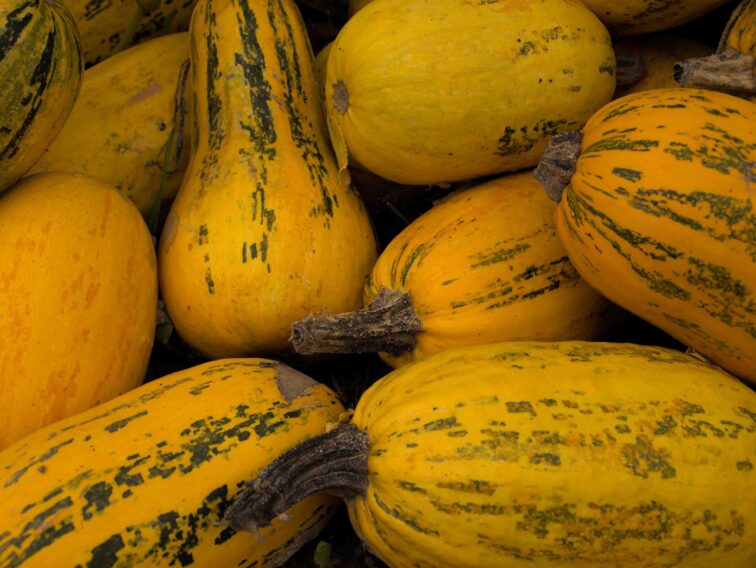Spaghetti squash is a low FODMAP, low carb, safe-fiber veggies. It’s available year round in most of the U.S. but it’s in season during the fall.
It’s versatile veggie that can be a substitute for pasta (because of its spaghetti shape when cooked) or made into fritters.
In the process of making spaghetti squash fritters, I discovered how tasty and nutritious spaghetti squash water is. It’s naturally full of minerals and vitamins.
If you a no- waste type, and don’t like buy vitamin water full of synthetic vitamins, you’re going to love this idea.
You get spaghetti squash water from squeezing the liquid from cooked spaghetti squash. In order to make fritters or pancakes of out this squash you have to squeeze the water out first.
After squeezing out the liquid from the cooked spaghetti squash pulp you have the main ingredient for making fritters AND a naturally sweet, mineral and vitamin rich water. And the water is fiber free so you can get all the nutrients of the veggie, without the abrasive fiber.
I love mixing the spaghetti squash water with bubbly water and adding a wedge of lime.
It can be added to soups or smoothies, used to sweeten tea or just sipped as is, hot or cold. Nature’s best supplements always come from food.
I have been focused on upping my mineral levels lately because the body burns through minerals when it’s stressed. I don’t know many people who are not stressed right now.
Replacing those minerals gives you more energy and resources to heal and live a more regulated and resilient life.
Nutrional content of spaghetti squash water
Spaghetti squash water is rich with b vitamins (especially B6, niacin and folate) and minerals like potassium, magnesium, calcium and iron. It also contains vitamins C & A.
The first 3 minerals listed above are primary minerals affected by stress, and catalyze many metabolic processes in the body.
Calcium, magnesium, sodium and potassium are 4 of the most important minerals to balance for stress relief, energy and adrenal health.
If you’re curious about your levels, I test them with the Hair Tissue Mineral Analysis test (HTMA). You need a teaspoon of hair cut at the root. It can’t be colored or chemically treated in the last 2 months.
Mineral levels are often overlooked by many health practitioners when addressing digestive issues, chronic stress, blood sugar dysregulation, fatigue and hormonal issues.
The HTMA is the only test I took 20 years ago to help me heal my gut and get rid of IBS symptoms for good.
The HTMA test measures mineral levels to help balance what is out of whack. What I love about this test is that it shows how stressed the body really is.
Sometimes our body can be stressed without us even noticing it, because we have been in a state of high arousal for so long. It just feels normal to us.
The HTMA measure the effect stress has had on the body, and the body’s capacity for healing. It tells us about the state of the adrenals, nervous system and immune system so we can support them better.
I often run gut tests on my clients that show what infections or overgrowths they have. These tests only give us a bit of info on how stressed or depleted the body is, and if it’s even ready to heal.
The only maker for this on the GI Map is Sig A (secretory IGA). This is the measure of gut immunity. But it is really good to have more information about what is driving low number. The HTMA can do that.
But back to our mineral-rich spaghetti squash water and how to make it.
How to make spaghetti squash water

The following recipe can also be followed with shredded zucchini or cooked/frozen spinach.
To make the water, I roast the spaghetti squash in the oven at 375 for 45 to 60 minutes, depending on the squash. You can also make it in an instant pot.
Once the squash is cooked and cooled, you can cut it in half and scoop out the seeds. Then you scoop out the flesh.
I use a nut bag to squeeze the water out of the spaghetti squash. You can buy one here on Amazon. You could also use a clean dish towel to squeeze the water out.
Fill your nut bag or towel with small portions of squash and squeeze over a bowl. When done, transfer the water to a glass jar or container and keep in the fridge. It will keep in the fridge for 4 to 5 days.
Recipe for fritters:
To make spaghetti squash fritters, in a bowl mix the 1 cup of spaghetti squash flesh with 1 egg and 1/2 cup of flour of your choice. I use almond flour but you can also use oat flour, chickpea flour, potato flour, or cassava flour. Or any gluten free flour mix.
Add 1 tsp of salt and your favorite spices.
Optional: If you tolerate grated Parmesan, I suggest adding 1/4 cup of that for extra flavor. But these are also great without the cheese.
You can either bake them or fry them.
Heat up the oven to 350F (180 C) and put 1/4 cup scoops of spaghetti squash dough on baking paper or a greased cookie sheet and form into tiny pancakes with your hands.
Bake for 15 minutes.
You can also cook them in a pan with hot coconut or avocado oil, just like you would tiny pancakes.
If you can’t do eggs, these can be made vegan by just doubling the flour. And adding a few teaspoon of ground flax. Add some liquid if the dough it too dry.
Here are more foods that replenish the 4 essential minerals that form the backbone of your hormonal and metabolic health.


